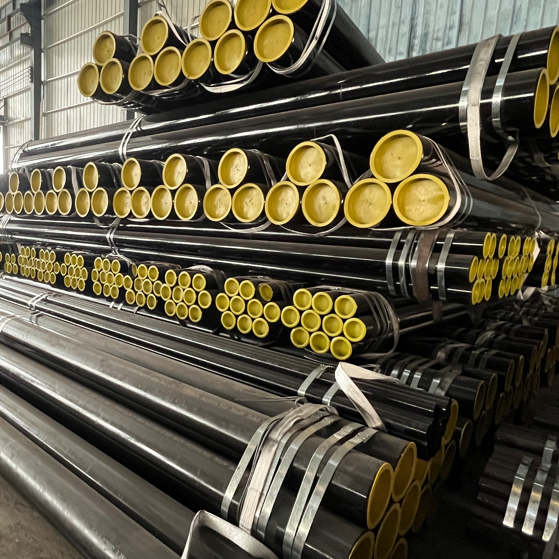Steel pipe manufacturer introduces what should be paid attention to when welding ASTM A106 seamless steel pipe?
Reasonable material selection:
Be sure to choose welding materials that are the same or similar to the pipe to ensure weld quality and performance. For welding of different materials, appropriate welding methods and filler materials must be selected.
Preparation:
Before welding, make sure the pipe surfaces on both sides of the weld are clean and free of grease, oxides or dirt to improve welding quality. Check the pipe geometry carefully to ensure the flatness and straightness of the butt ends of the pipes.
Welding equipment:
Use appropriate welding equipment and tools, including welding machines, electrodes, welding guns, etc. Select the appropriate welding current and voltage according to the diameter and wall thickness of the pipe.
Welding method:
Choose the appropriate welding method according to the specific situation, including manual arc welding, submerged arc welding, argon arc welding, etc. For projects with special requirements, automated welding equipment may be required to improve welding efficiency and consistency.
Preheating and welding parameters:
Before welding, some thick-walled pipes need to be preheated to reduce the temperature gradient during the welding process and avoid cracks.
Strictly control welding parameters, including welding current, voltage, speed, etc., to ensure the uniformity and firmness of the weld.
Weld design and preparation:
Design a reasonable weld shape, including groove shape, groove angle, etc. For thick-walled pipes, multi-pass, multi-layer welding processes can be considered to improve the quality of the welds.
Monitoring and inspection:
ASTM A106 seamless steel pipe During the welding process, use appropriate monitoring and inspection tools, such as X-rays, ultrasonics, magnetic particle inspection, etc., to inspect the welds to ensure that there are no welding defects. Conduct visual inspection of the welded pipeline to ensure that the weld is smooth in appearance and free of defects such as cracks and slag inclusions.
 Why should Seamless steel pipes be epoxy powder coated?
Why should Seamless steel pipes be epoxy powder coated?
 ASTM A106 Thick-walled steel pipe production steps
ASTM A106 Thick-walled steel pipe production steps
 Shengtian Group successfully participated in the Russian Oil and Gas Exhibition
Shengtian Group successfully participated in the Russian Oil and Gas Exhibition
 Is API 5L Black Steel Pipe Good For Air Lines?
Is API 5L Black Steel Pipe Good For Air Lines?